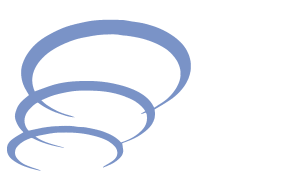The Fire Danger Estimate measures the potential for fire ignition and spread using temperature, humidity, wind, and rainfall in its' calculations.
These calculations are done automatically using weather observations taken by the station.
The actual fire potential may vary from this estimate. Be aware & always practice good fire safety.
In addition to the calculations, the Estimate is colour matched to the current temperature in real-time.
This is intended as an additional layer for you to consider as warmer temperatures will increase the intensity of a fire.
When the Estimate appears yellow, orange, or red additional caution is recommended.
The official Fire Danger Rating for Sunshine Valley is made available by the local volunteer fire department and
the BC Forestry Service. It can be seen here online as well as posted on signage in the community.
The official Rating shall always supersede the Estimate on this page.
• Low Risk - fires are possible and can spread, but fuel sources will mostly be damp, limiting the chance of ignition, and reducing the speed and intensity of any fire. Some systems call this level Very Low.
• Slight Risk - fires may start easily and spread quickly but there will be minimal involvement of deeper fuel layers or larger fuels. Systems which use Very Low will call this level Low.
• Moderate Risk - forest fuels are drying and there is an increased risk of surface fires starting. Carry out forest activities with caution.
• High Risk - forest fuels are very dry and extreme caution must be used in any forest activities. New fires may start easily and burn vigorously.
• Extreme Risk - extremely dry forest fuels may restrict or prohibit forest activities. New fires will start easily and spread rapidly.
The weather station uses two different methods for estimating fire risk, the Chandler Burning Index and the Fire Weather Index.
The Fire Weather Index is a robust method developed in Canada and used by fire and forestry services around the world.
Instant Calculations:
• Chandler Burning Index (CBI) - uses only temperature and humidity to instantly calculate the fire danger.
Hourly Calculations:
• Fire Weather Index (FWI) - represents potential fire front intensity using the ISI & BUI.
• Daily Severity Report (DSR) - represents the difficulty of fire fighting efforts based on the FWI.
• Initial Spread Index (ISI) - represents the expected rate of fire spread using FFMC & wind.
Daily Calculations:
• Build Up Index (BUI) - represents the total fuel available using DMC & DC; it's this value which typically gets
used to represent the Fire Danger Estimate.
Fuel Calculations:
These values use temperature, wind, humidity, and rain in their calculations. They represent the moisture content in the top three layers of soil. These are the most important
values for the purpose of the Estimate because they represent the condition of the fuel available to a fire. It takes three months of uninterrupted observations to obtain a complete data set.
• Fine Fuel Moisture Code (FFMC) - the top 2cm of soil, quickly affected by rain; the most rapid decay rate, 3 days.
• Duff Moisture Code (DMC) - the loosely compacted soil layer 5-10cm deep; decay rate 18 days.
• Drought Code (DC) - moisture content of deep, compacted organic layers 10-20cm deep; decay rate 76 days.

